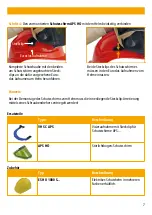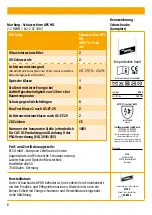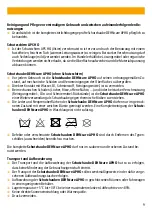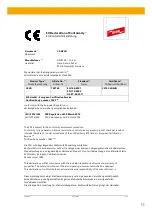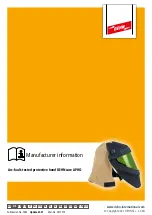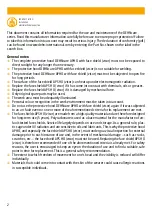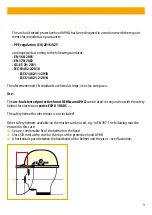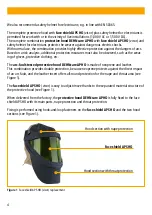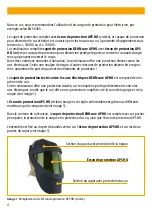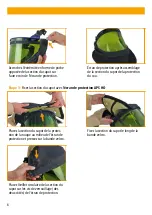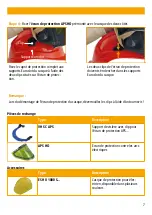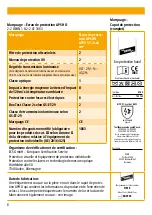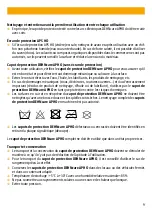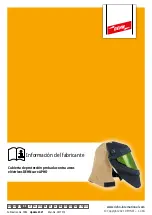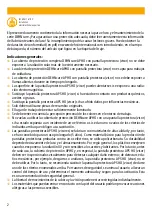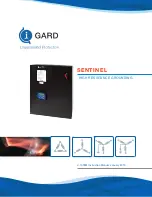
9
Cleaning and care prior to first-time use and between subsequent instances of use
Â
The complete arc-fault-tested protective hood DEHNcare APHO must always be handled with care.
Face shield APS HO
Â
If the face shield APS HO (visor) is dirty, it must be cleaned with a moist (with warm tap wa-
ter), lint-free cloth before and after use. In the case of heavy soiling, a (mild) soap may also be
used. Commercially available solvents or organic compounds are not allowed, because they could
weaken the surface and reduce the material tension.
Protective hood DEHNcare APHO (without face shield)
Â
Prior to each instance of use, the
protective hood DEHNcare APHO
must be checked to ensure
that it is in good condition and there is no mechanical damage or soiling on the surfaces.
Â
Direct contact with water, oil, lubricants and cleaning agents should be avoided.
Â
In the event of mechanical damage (holes, tears, open seams, etc.) and/or heavy soiling (cleaning
agent, oil and lubricant residues), the
protective hood DEHNcare APHO
should be withdrawn
from further use as a protective hood against thermal risks.
Â
The leather and neoprene surfaces of the
protective hood DEHNcare APHO
must only be
cleaned in a dry condition with a soft brush. Full cleaning of
DEHNcare APHO protective hoods
in suds is not permitted.
Â
Defective or soiled
DEHNcare APHO protective hoods
must be indicated by removing the serial
label (by cutting it out).
The complete
protective hood DEHNcare APHO
must only be used in a clean and dry condition.
Transport and storage
Â
Transport and storage of the
protective hood DEHNcare APHO
must be carried out in such a
way that the performance characteristics are not impaired.
Â
Ideally, the
protective hood DEHNcare APHO
will be transported in the storage bag provided
for this purpose.
Â
Store the
DEHNcare APHO protective hoods
in closed spaces or vehicles in a suitable container.
Â
Storage temperature: +5°C to +30°C with a maximum relative humidity of <85%
Â
No direct sunlight or heat sources.
Â
Avoid pressure.

